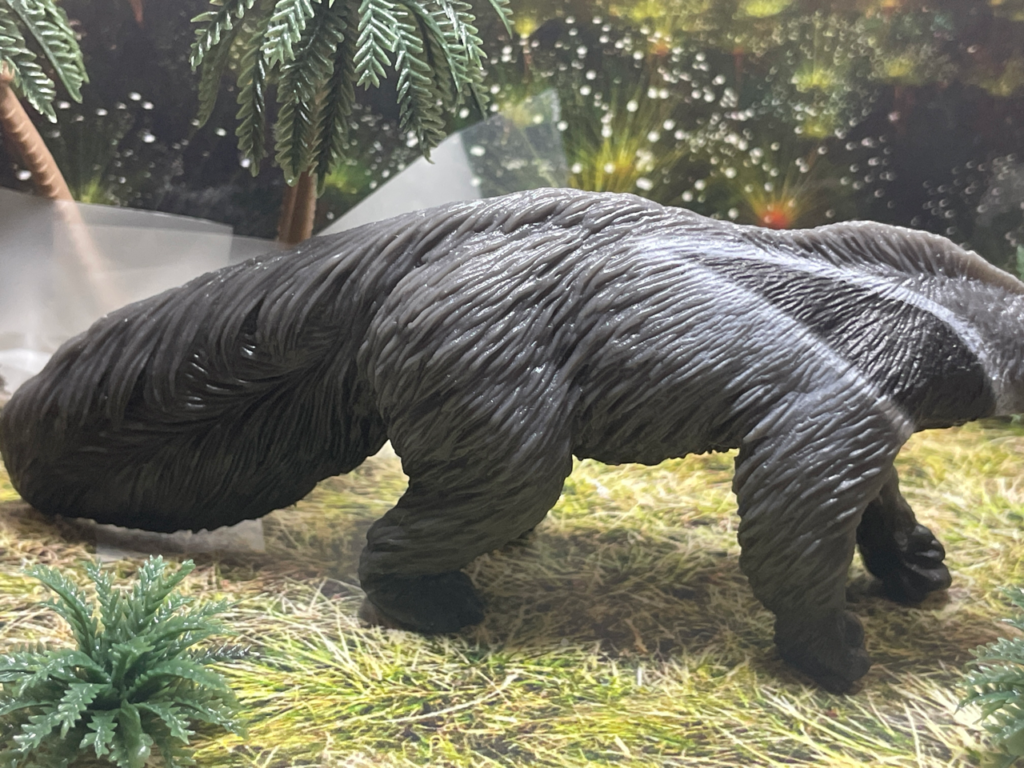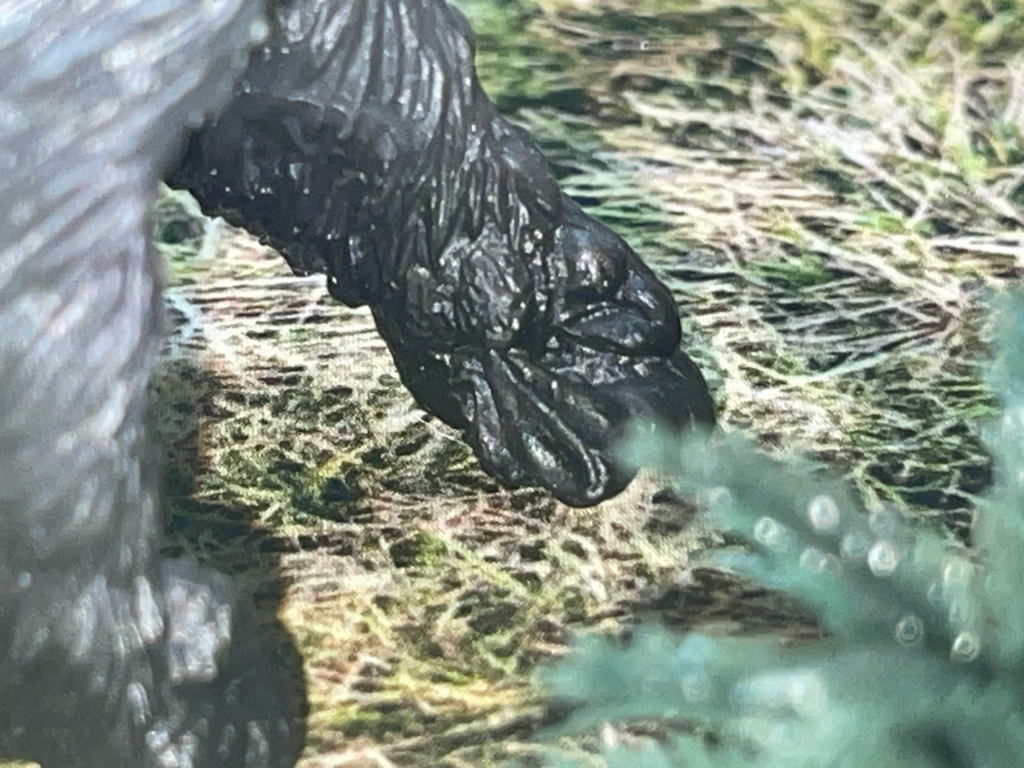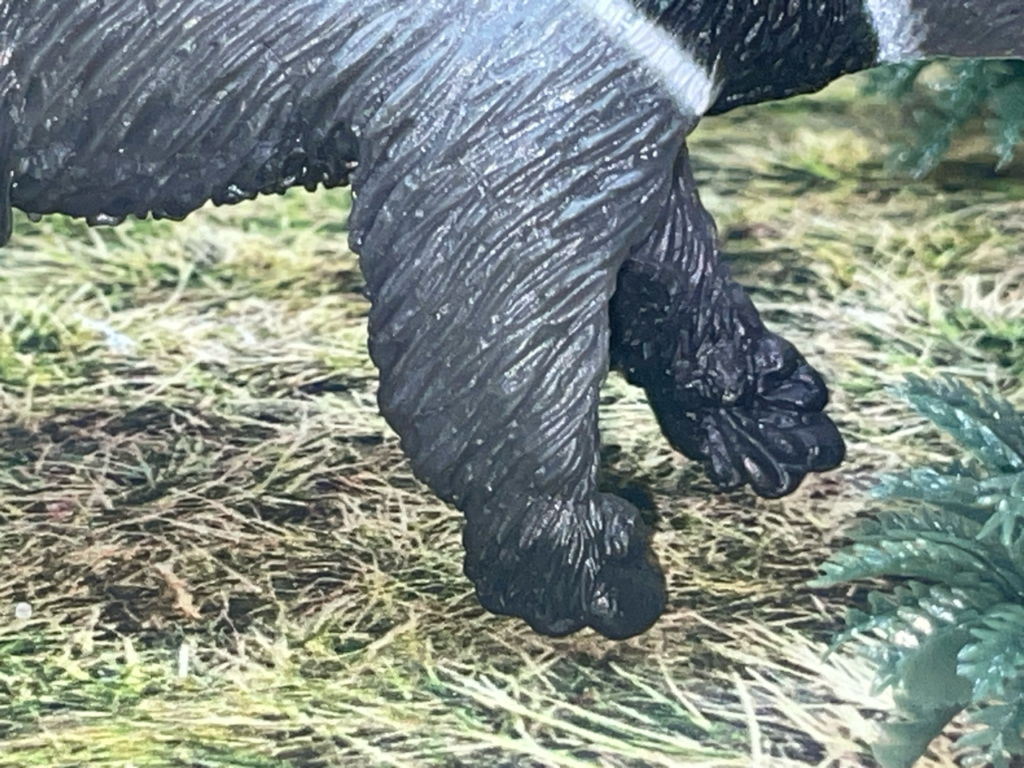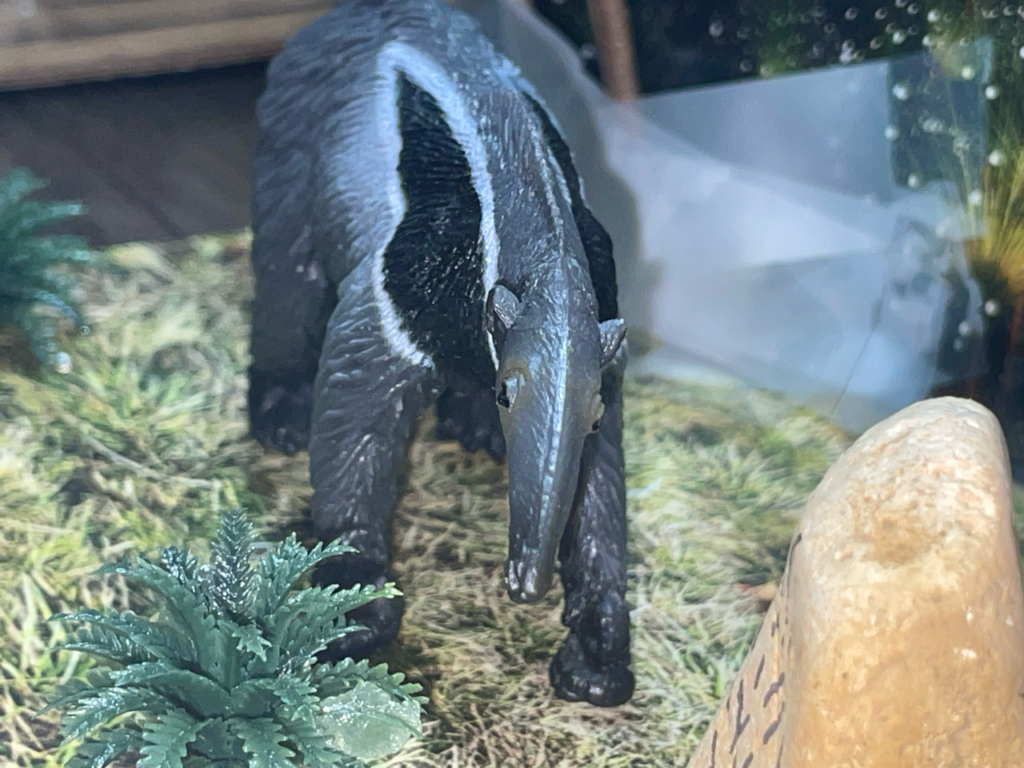Review and images by Sam; edited by bmathison1972
An animal of absurd proportions, the giant anteater (Myrmecophaga tridactyla) is the largest of the anteater species as well as the largest living member of Xenarthra, a group of placental mammals characterized by fused pelvic bones, spine reinforcing bones, and a peculiar blood vessel structure that allows energy sparing by an extremely low metabolic rate. They are classified within the clade Pilosa along with tree sloths. With a long snout, lack of teeth, a two-inch-long sticky tongue, and sharp, four-inch claws, these animals were built for the sole purpose of tracking down and slurping up ants and termites. The giant anteater can be found in the tropical rainforests, grasslands, and swamps of Central and South America, where they play an important ecological role in their native ecosystems to control the populations of ants and termites. Unfortunately, they are listed as “Vulnerable” on the IUCN Red List, and some of the threats this species faces includes habitat destruction for development and agriculture, roadkill, hunting, and climate change, and sadly, they are already extinct in the countries of Uruguay, Guatemala, and El Salvador, as well as some parts of Peru and Brazil, a stark reminder of the irreversible damage we humans could cause if we do not become more environmentally conscious. I just got back from my family vacation to Aruba a few days ago to a special surprise: my Mojö Fun giant anteater figure finally came in after being shipped all the way from the United Kingdom. Amazingly, he came in a day early, coming in yesterday when today was supposed to be the delivery date. He was released in 2023 as part of Mojö Fun’s Wildlife line. I affectively named my model John, and he will be referred to as such throughout the review.

Now onto the review! His measurements are 5.9 x 1.38 x 1.89 inches. He is made out of plastic, and is a single-piece figure and does not come on a base. He is almost completely seamless, with the exception of a very thin seam along his snout and his forefeet, but you can only see it if you were looking super close to him so it fails to break the immersion. He is also made of a shiny plastic, which is especially evident in the light. John is a very beautiful anteater, with lots of attention to detail. He is sculpted in a dynamic walking position, with his head turned ever so slightly to the right, as if he is sniffing out some tasty ants and termites. His long snout is beautifully sculpted, with the tip of his snout sculpted with slits for his nostrils and his small, toothless mouth. There is a lot of attention-to-detail with his eyes, including some wrinkling surrounding his eyelids, and there are very faint splotches of rusty orange around his eyes as well.

Further down his body, John sports a lovely black-and-white stripe that graces both sides of his body, from his chest to the wavy “mane” along his back. It’s very bright and easily stands out against his otherwise grey fur. His stripe is even accented by a white patch around it, making it look like the stripe is “glowing,” further adding to his beauty. There is shoulder bone definition as well. He has a big, bushy, fanlike tail, serving as a sunshade during the day and a blanket at night. On this particular model, the tail looks a little like a feather duster. He is covered in lovely detailing that represents his thick, fuzzy fur.

His feet are also accurately sculpted as well. His forefeet have five claws, with two of them being the largest, the latter of which he would use to break open termite mounds as well as fend off predators such as pumas and jaguars. There is even a paw pad between his claws as well, which is an awesome detail that you don’t often see on giant anteater figures. He is also depicted walking on his knuckles, just like a real anteater would to keep his claws sharp. His back feet also have claws, although they are much shorter, as they should!

Finally, there are just two minor inaccuracies to John’s colors. Indeed, he is grey, black, and white just like a real anteater, but his front legs are not white and lack the characteristic black panda-looking band around his front legs just above his feet. However, it does not seem to be as much as an issue to me, because that “white glow” framing his stripe might be supposed to represent the white color of his front legs, and I can kind of make out a little bit of black where the stripe would be, although it is very faint and only the most keen eye can detect it. Perhaps this specimen has unique genetics causing those stripes to be rather faded! I’m just using my imagination here.

Overall, this model is very beautiful, and he looks absolutely amazing in my diorama representing the Brazilian Cerrado, where giant anteaters are plentiful. I own many anteater toys since anteaters are my favorite animal, including four plush toys, but John is my most prized anteater toy. I love him for his anatomical accuracy as well as his beauty. While he can be a children’s toy, I prefer him to be a collector’s model, but I’ll leave it entirely up to anyone else who just so happens to own him. I highly recommend him to anybody’s animal model collection and to anteater lovers like myself, and for those who have South American-themed dioramas, he would be a perfect fit! I’ve owned many amazing figures manufactured by the same company, including their 2012 sea lion and 2013 tamandua, so I expected to not be disappointed by their new giant anteater, and here we are! Nice work once again, Mojö Fun!

Disclaimer: links to Ebay and Amazon on the AnimalToyBlog are affiliate links, so we make a small commission if you use them. Thanks for supporting us!



